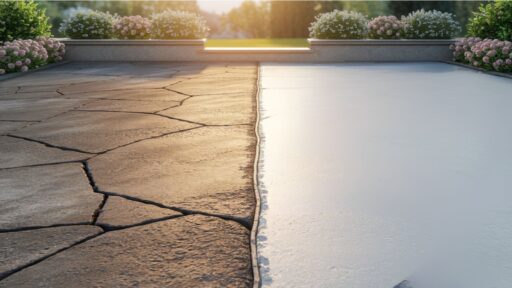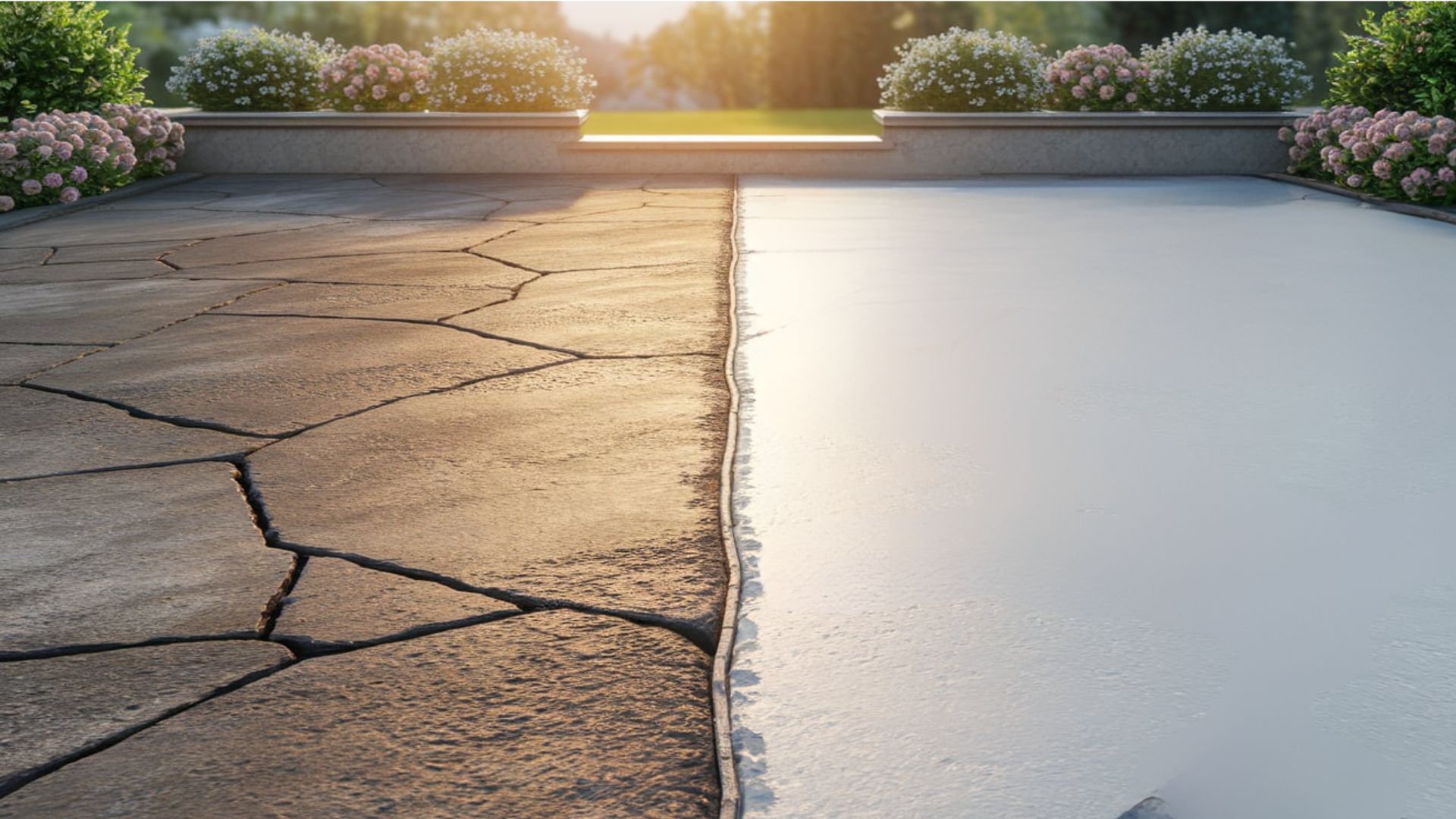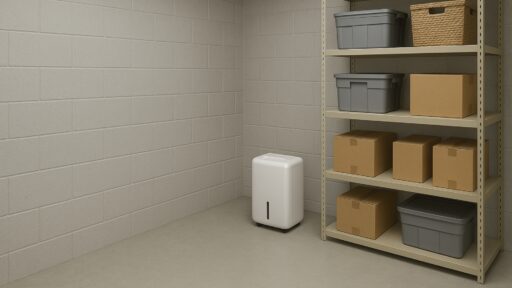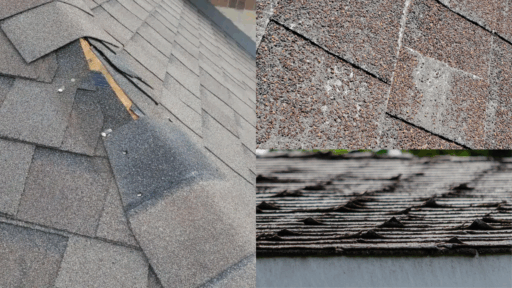Have you ever wondered why concrete develops those ugly cracks that seem to appear out of nowhere?
Concrete cracks typically form naturally due to settling, temperature fluctuations, water damage, and normal aging over time in most structures.
The importance of timely repairs is crucial; small cracks can develop into costly structural issues if left unaddressed.
What concrete crack repair before-and-after photos reveal is truly amazing about the changeover of your foundation’s structural integrity.
These dramatic comparisons demonstrate how proper repairs restore strength and eliminate safety hazards.
They also highlight how these repairs can bring your property’s appearance back to a well-maintained state.
The difference between cracked, damaged concrete and professionally repaired surfaces often surprises homeowners with the dramatic visual improvement available.
Why Concrete Crack Repair Is Essential?
Think about what happens when you ignore a small problem until it becomes a big one.
Concrete cracks work similarly; they start small but grow larger and more expensive over time.
Preventing further structural damage is the most important reason to repair cracks promptly before they compromise your foundation.
Your home’s appearance and value improve dramatically when you eliminate unsightly cracks that make your property look neglected.
Safety becomes a concern when cracks create trip hazards or allow water to compromise the foundation’s support.
Consider how much money you’ll save by fixing small cracks now instead of replacing entire concrete sections later.
Proper crack repair can extend your concrete’s lifespan by decades, protecting your investment for years to come.
Common Types of Concrete Cracks
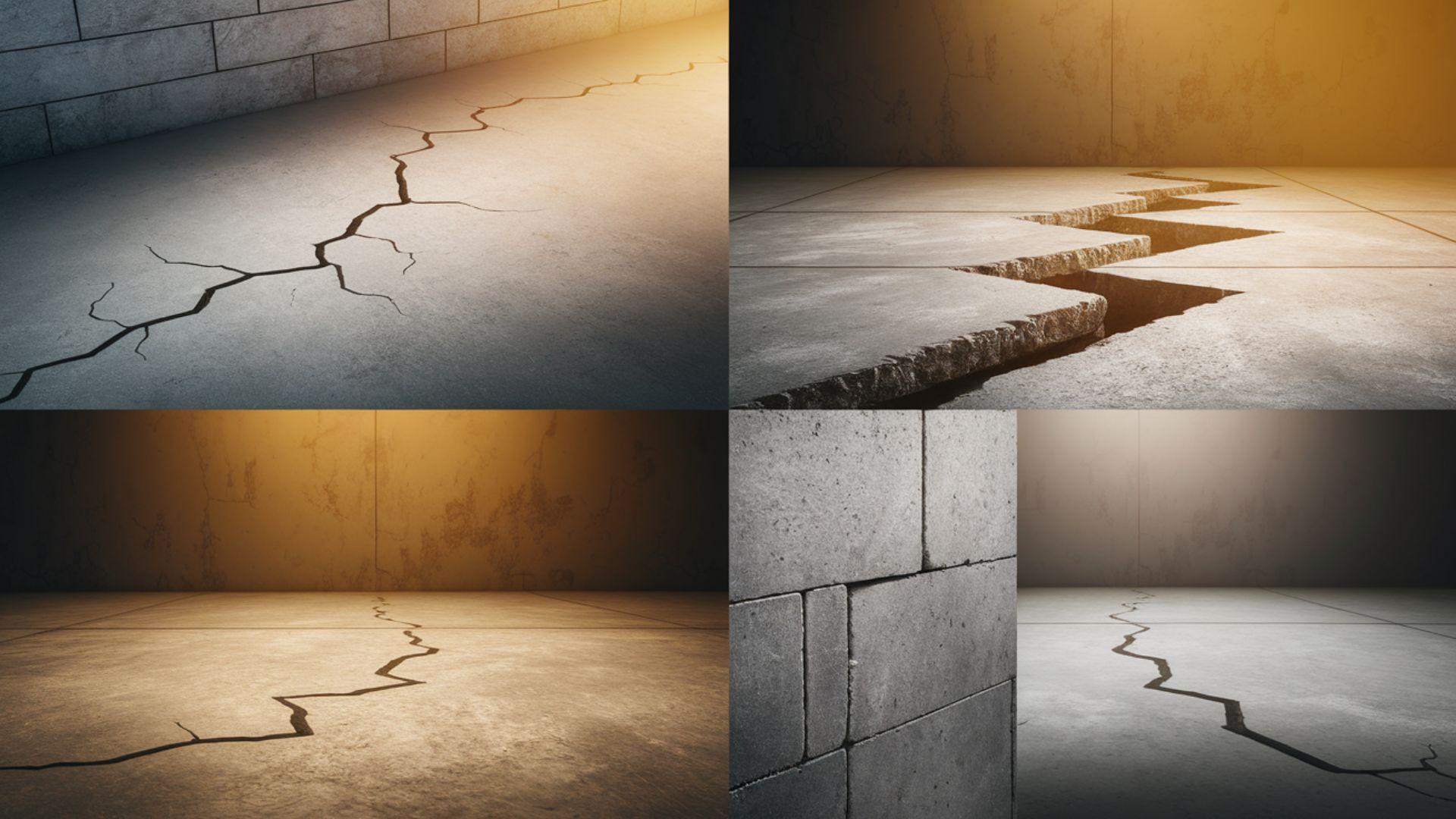
Understanding different types of concrete cracks helps you determine which ones need immediate attention.
Some cracks are just cosmetic issues, while others pose serious structural threats to your foundation.
| CRACK TYPE | DESCRIPTION | SEVERITY |
|---|---|---|
| Hairline Cracks | Thin surface cracks less than 1/8 inch | Low |
| Settlement Cracks | Cracks from foundation settling or soil movement | High |
| Expansion Cracks | Cracks from temperature changes and concrete movement | Medium |
| Structural Cracks | Wide cracks affecting building integrity | Critical |
| Non-Structural Cracks | Surface cracks that don’t compromise the foundation | Low |
Knowing which type of crack you’re dealing with helps you choose the right repair method.
Always consult professionals for structural cracks that could threaten your home’s safety and stability.
Before the Repair: What to Look For
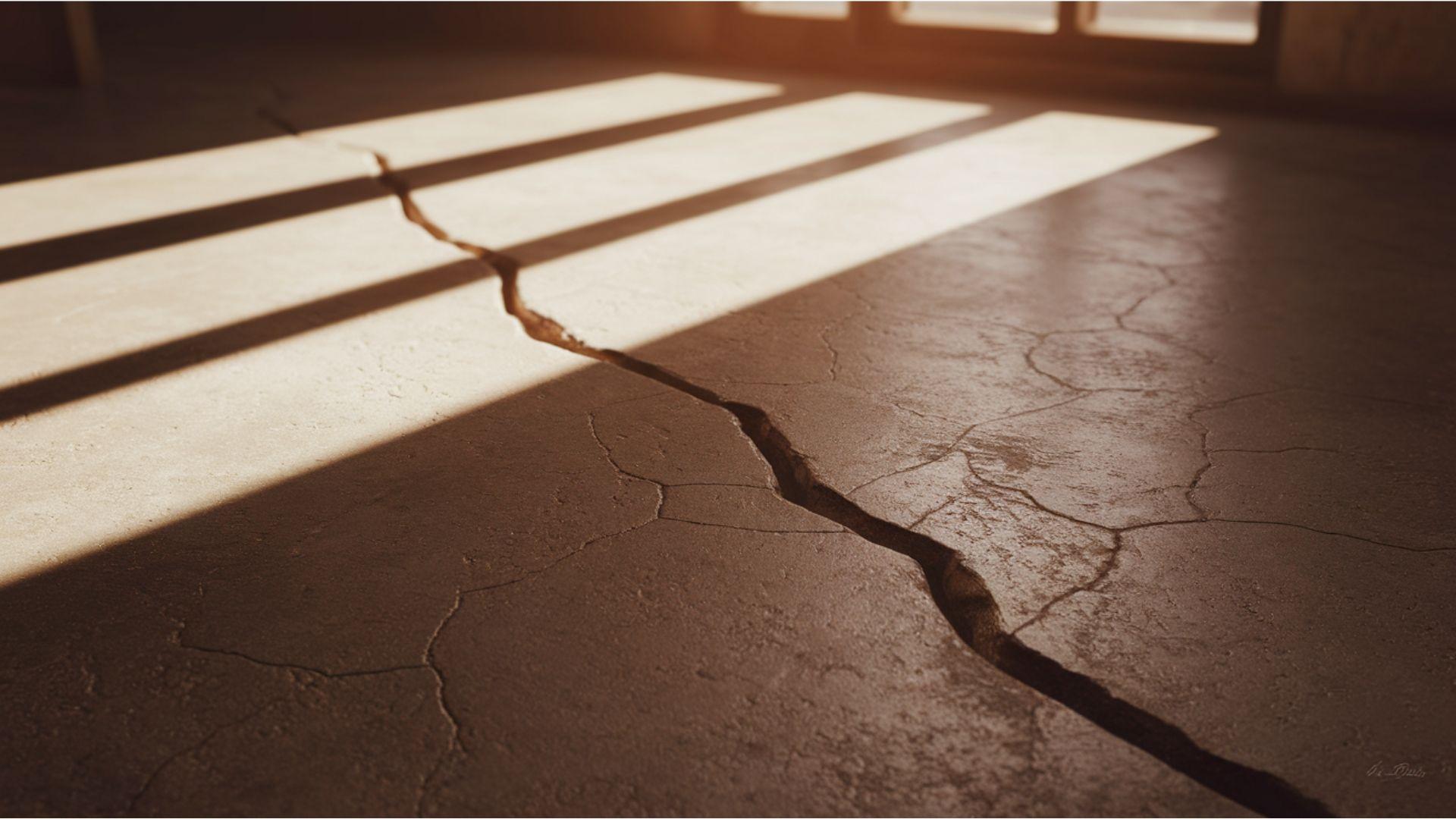
Have you ever wondered if that crack in your concrete is something to worry about or ignore?
Start by measuring the crack width; anything over a quarter inch typically requires professional attention right away.
Look for signs such as water seepage, increasing crack size, or multiple cracks appearing simultaneously, which indicate the need for immediate repair.
Check if the crack goes all the way through the concrete or affects the surface layer.
Consider what might have caused it – was it sudden settling, tree roots, or just normal aging?
While you can assess small surface cracks yourself, structural issues require professional evaluation to ensure your safety.
Remember that catching problems early always costs less than waiting until they become major repairs.
Repair Methods and Tools List
Concrete crack repair involves choosing between DIY methods for simple fixes and professional techniques for serious problems.
Knowing your repair options and tools helps you decide if to tackle the project yourself.
Most homeowners can handle basic surface cracks, but structural issues need professional expertise and specialized equipment.
DIY-Friendly Repairs
Some concrete crack repairs are simple enough for most homeowners to handle with basic tools and materials.
These methods are effective for minor surface cracks that don’t compromise your foundation’s structural integrity.
- Concrete crack filler works perfectly for hairline cracks that are primarily cosmetic and don’t extend deeply.
- Hydraulic cement stops active water leaks quickly by expanding as it sets, even in wet conditions.
- Concrete caulk seals expansion joints and effectively prevents water from entering the spaces between concrete sections.
- Concrete resurfacer covers widespread surface damage, making old concrete look new again with minimal effort.
These DIY solutions save money and give you satisfaction from completing the work yourself successfully.
Most of these materials are available at home improvement stores and come with easy-to-follow instructions.
Professional Repair Techniques
Professional repairs utilize specialized equipment and techniques that exceed typical DIY capabilities and safety limits.
These methods address serious structural issues that could affect your home’s foundation stability and long-term safety.
- Epoxy injection fills structural cracks with powerful resin that bonds permanently to concrete for lasting results.
- Polyurethane injection expands to seal water-active cracks and prevents future leaks even under hydrostatic pressure conditions.
- Concrete grinding and patching remove damaged sections and rebuild them with professional-grade materials and proper techniques.
- Full section replacement involves removing and rebuilding severely damaged concrete areas that cannot be effectively repaired otherwise.
Professional repairs come with warranties and ensure the work meets building codes and safety standards.
These methods often prevent the need for more costly repairs down the road when done perfectly.
Tools and Materials Used in Repairs
Here’s a simple cost breakdown to help you plan your concrete crack repair budget.
These estimates reflect prices for common DIY tools and materials.
| TOOL/MATERIAL | ESTIMATED COST (USD) |
|---|---|
| Hammer and chisel | $5–$15 |
| Wire brush | $2–$10 |
| Shop vacuum | $40–$120 |
| Caulk gun | $6–$20 |
| Concrete crack filler | $8–$25 |
| Epoxy injection kit | $35–$80 |
| Safety glasses | $3–$10 |
| Work gloves | $3–$10 |
| Putty knife | $2–$8 |
| Clean rags | $2–$6 |
Total Estimated Cost Range
Low end (if you own a shop vac): $68–$184
If you need to buy everything: $108–$304
These ranges help you estimate expenses, if you’re starting from scratch or already own some equipment.
Additionally, these are estimated costs so that they may vary depending on the time and location.
Always compare prices before purchasing to find the best deals.
Step-by-Step Repair Process

Following the proper steps ensures your concrete crack repair lasts for years and prevents the problem from returning.
Most repairs fail because people skip necessary preparation steps or rush through the process too quickly.
- Cleaning and prepping the surface: Remove all loose debris, dirt, and old filler using a wire brush and vacuum.
- Choosing the right filler or epoxy: Select materials based on crack size, location, and whether water is actively leaking through.
- Applying the repair material: Follow the manufacturer’s instructions carefully and work slowly to ensure complete crack penetration and coverage.
- Finishing and smoothing: Level the repair material with the surrounding concrete and remove excess before it starts to harden.
- Curing time and sealing: Allow proper drying time, then apply sealer to protect the repair from future water damage.
Taking your time with each step makes the difference between a repair that lasts decades versus one that fails.
Remember that rushing through any of these steps usually means you’ll have to redo the repair soon.
After the Repair: What Changes
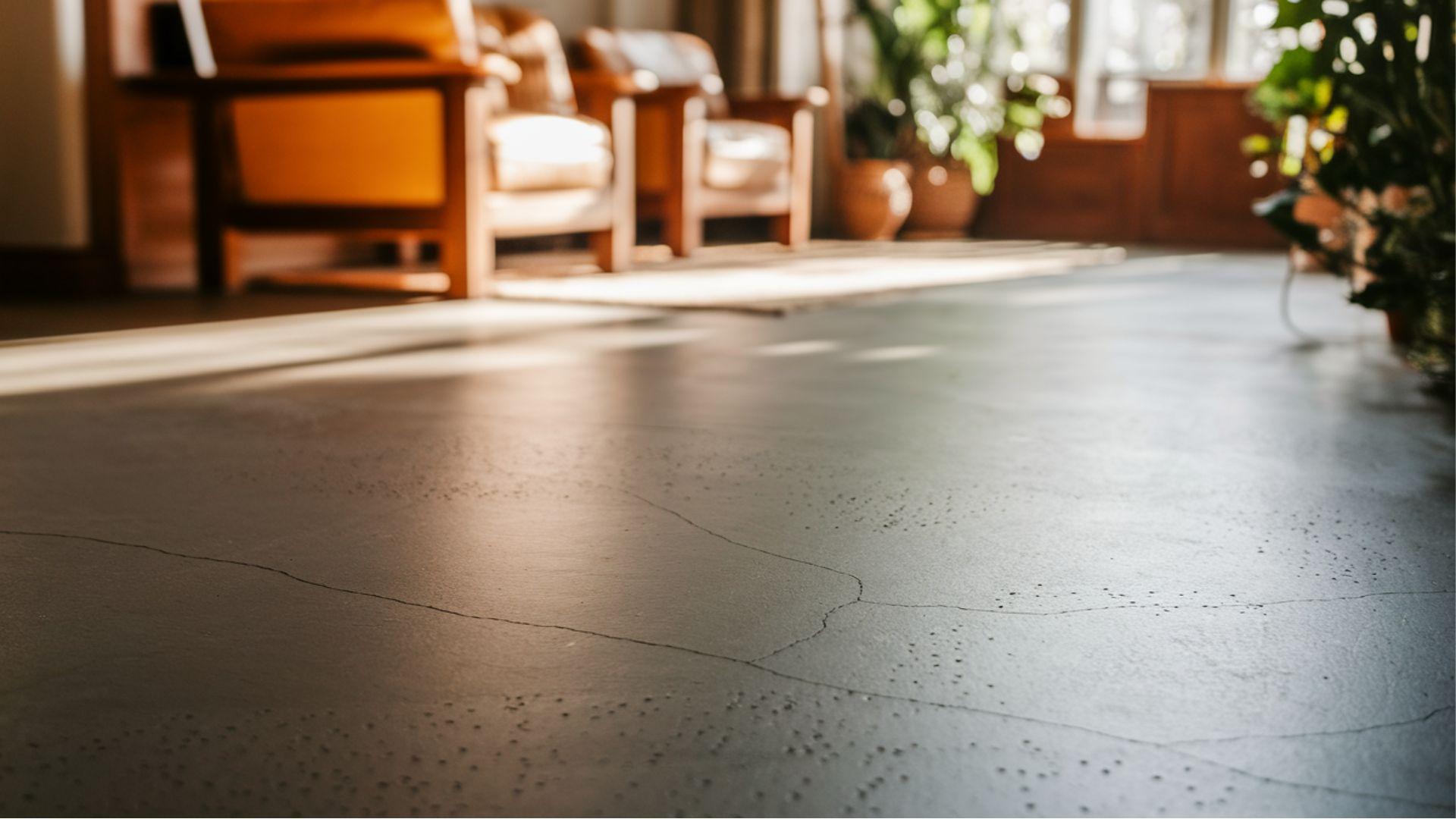
Notice the difference in your concrete once you complete a successful crack repair job.
Visual improvements are immediate and dramatic; ugly cracks disappear, making your property look well-maintained again.
Your concrete’s strength gets restored to nearly original levels when you use quality repair materials properly.
Consider how much better you feel knowing those weak spots won’t spread or cause issues.
Long-term durability benefits include protection from water damage, freeze-thaw cycles, and further cracking, which can cost thousands.
Consider how much your property value increases when buyers see a foundation that’s been properly maintained.
Most homeowners are surprised by the peace of mind that comes from addressing these issues early.
Tips to Prevent Future Cracks
Preventing concrete cracks is much easier and cheaper than fixing them after they appear and spread.
Smart maintenance habits protect your concrete investment and save you from expensive repairs down the road.
- Proper curing of new concrete involves maintaining its moisture for seven days.
- Regular sealing and maintenance, performed every two to three years, block water penetration.
- Drainage and ground stabilization ensure water flows away from your concrete properly.
- Control expansion joints by keeping them clean and sealed from water damage.
- Monitor temperature changes and avoid pouring concrete during extreme weather conditions.
These simple steps take minimal effort but extend your concrete’s lifespan by many years.
Think of it as regular maintenance that protects one of your home’s most important structural elements.
Wrapping It Up
Acting early when you notice concrete cracks can save thousands in future repairs.
What concrete crack repair before-and-after photos reveal is that proper repairs work remarkably well.
These modifications demonstrate that addressing cracks promptly restores structural integrity while significantly enhancing your property’s value.
Don’t let minor concrete issues escalate into major structural problems that compromise your home’s foundation.
Most homeowners wish they had acted sooner after seeing how amazing their concrete looks afterward.
Your concrete deserves the same attention you give other important home maintenance tasks and projects.
Ready to change your cracked concrete into something beautiful and strong again?
Share your repair success stories in the comments below!
If you’re interested in more Home Maintenance content, check out our other blogs that you might enjoy.

